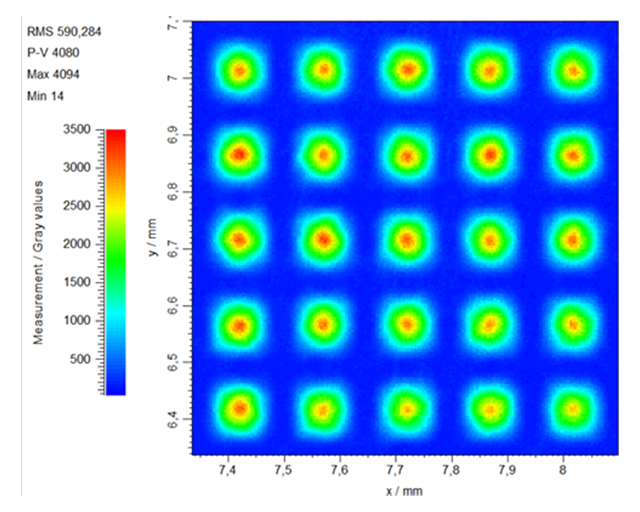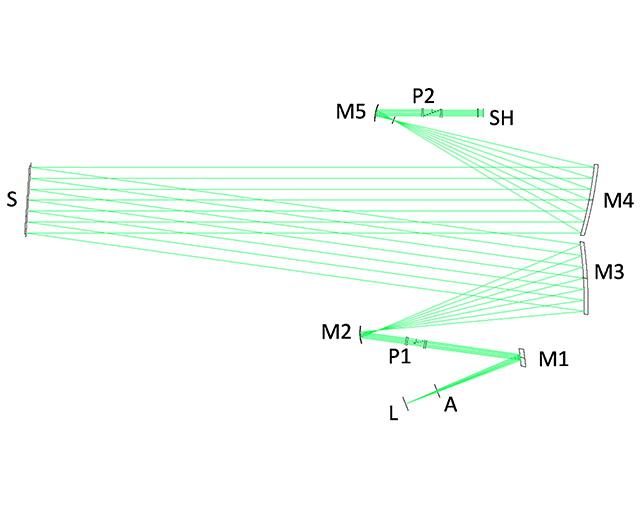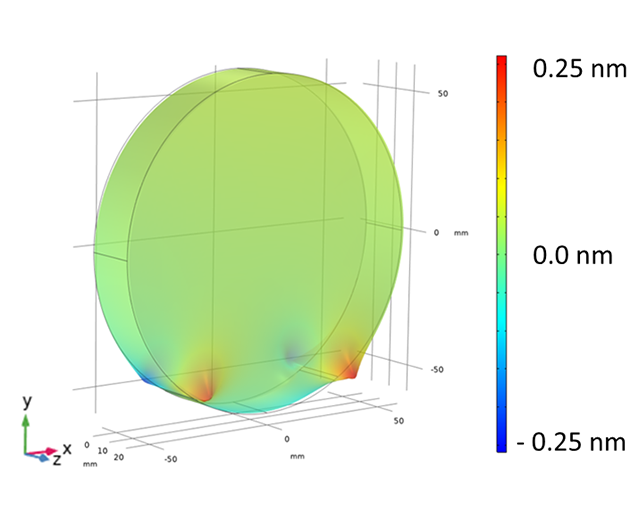Within the framework of the Euclid mission, ESA is investigating dark matter and the origin and expansion of the universe. The instrument thereby deployed has an imaging system for the visible, and a spectrometer for the near-infrared spectral range. The devices measure the light spectrum of distant stars, for which reason the optics are of a correspondingly high quality. The separation of the two channels is performed with the aid of a beam splitter. Physically determined – the separation is accomplished with the help of a dielectric multi-layer coating – the beam splitter shows specific wavefront errors depending on wavelength and angle of incidence. In order to be able to suitably characterize the component at all, a purpose-developed measurement setup is required, the development of which was undertaken by the Fraunhofer IST as an element of a design study.
Setup for high-precision wavefront measurement




The challenge
For optical systems with highly accurate imaging properties, the wavefront deformation – in addition to other imaging errors – plays a decisive role. The requirements for a setup such as that required for the ESA project are therefore exceptionally stringent: Firstly, the polarization-dependent measurement of the reflected wavefront error as well as the point spread function of the dichroite across an aperture of 117 mm must be facilitated. Secondly, the spectral range from 510 to 950 nm must be covered with a resolution of <0.4 nm. Furthermore, an adjustment possibility of the angle of incidence for 0°, as well as between 4° and 20° is desired.
Measurement setup
In order to avoid chromatic aberrations, a design with mirror optics was selected. A tunable white-light laser serves as the light source, whilst the measurement of the actual wavefront is performed via a so-called Shack-Hartmann sensor. The two polarizers and the stage for setting the angle of incidence can be motorized. Solely for the measurement under 0° angle of incidence an additional beam splitter needs to be inserted.
As the central component of the measurement setup, the Shack-Hartmann sensor was optimized in terms of focal length and the quantity and pitch of the micro-lenses. Thereby, the repeatability of the sensor was reduced from 2 nm to below 0.97 nm in the entire wavelength range. Furthermore, ghost images, noise and dynamic behavior of the sensor were investigated.
Measurement accuracy
Via Monte Carlo simulations, the cumulative wavefront error of the entire setup was ultimately estimated to be 45.3 nm (4-20°), or 66.5 nm (0°). As the wavefront error is only accessible as a relative magnitude from two wavefront measurements, a correspondingly accurate referencing is required. The actual accuracy of the measurement was determined to 1.71 nm RMS by means of an externally measured reference substrate, as well as through reconstruction and repeatability of the sensor.
Outlook
The design study performed paves the way for high-precision wavefront measurements over broad spectral ranges that can be realized in similar setups. Competency in optical metrology and characterization as well as in optics design, including the use of ZEMAX, complement the expertise available at the Fraunhofer IST in the field of precision optical coatings.
The project
This research work was funded by ESA within the framework of project No. AO/1-10283/20/NL/PM and was conducted with the support of Asphericon (tolerance analysis) and Optocraft (measurements of Shack-Hartmann configurations).